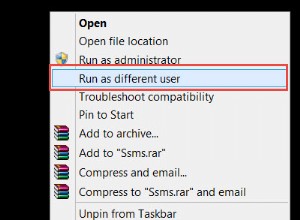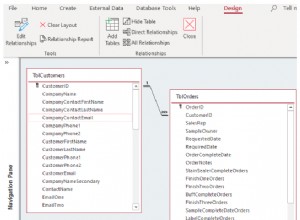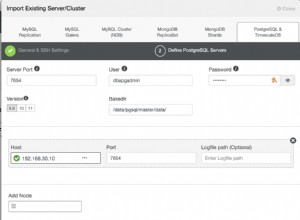Existem várias maneiras de transformar os dados. Alguns usam uma função agregada e outros não. Mas mesmo que você esteja girando uma string, você ainda pode aplicar uma agregação.
Agregar com CASE:
select name,
max(case when category = 'A' then 'X' else '' end) CategoryA,
max(case when category = 'B' then 'X' else '' end) CategoryB,
max(case when category = 'C' then 'X' else '' end) CategoryC,
max(case when category = 'D' then 'X' else '' end) CategoryD
from yourtable
group by name
Consulte SQL Fiddle with Demo
Pivot estático:
Você ainda pode usar o
PIVOT função para transformar os dados mesmo que os valores sejam strings. Se você tiver um número conhecido de categorias, poderá codificar a consulta:select name,
coalesce(A, '') CategoryA,
coalesce(B, '') CategoryB,
coalesce(C, '') CategoryC,
coalesce(C, '') CategoryD
from
(
select name, category, 'X' flag
from yourtable
) d
pivot
(
max(flag)
for category in (A, B, C, D)
) piv
Consulte SQL Fiddle with Demo .
Pivot dinâmico:
Se você tiver um número desconhecido de categorias, poderá usar o SQL dinâmico:
DECLARE @cols AS NVARCHAR(MAX),
@colsNull AS NVARCHAR(MAX),
@query AS NVARCHAR(MAX)
select @cols = STUFF((SELECT ',' + QUOTENAME(category)
from yourtable
group by category
order by category
FOR XML PATH(''), TYPE
).value('.', 'NVARCHAR(MAX)')
,1,1,'')
select @colsNull = STUFF((SELECT ', coalesce(' + QUOTENAME(category)+', '''') as '+QUOTENAME('Category'+category)
from yourtable
group by category
order by category
FOR XML PATH(''), TYPE
).value('.', 'NVARCHAR(MAX)')
,1,1,'')
set @query = 'SELECT name, ' + @colsNull + '
from
(
select name, category, ''X'' flag
from yourtable
) x
pivot
(
max(flag)
for category in (' + @cols + ')
) p '
execute(@query)
Consulte SQL Fiddle with Demo .
Várias junções:
select c1.name,
case when c1.category is not null then 'X' else '' end as CategoryA,
case when c2.category is not null then 'X' else '' end as CategoryB,
case when c3.category is not null then 'X' else '' end as CategoryC,
case when c4.category is not null then 'X' else '' end as CategoryD
from yourtable c1
left join yourtable c2
on c1.name = c2.name
and c2.category = 'B'
left join yourtable c3
on c1.name = c3.name
and c3.category = 'C'
left join yourtable c4
on c1.name = c4.name
and c4.category = 'D'
where c1.category = 'A'
Consulte SQL Fiddle with Demo
Todas as consultas darão o resultado:
| NAME | CATEGORYA | CATEGORYB | CATEGORYC | CATEGORYD |
--------------------------------------------------------
| Joe | X | X | | X |
| Mary | X | | X | X |




